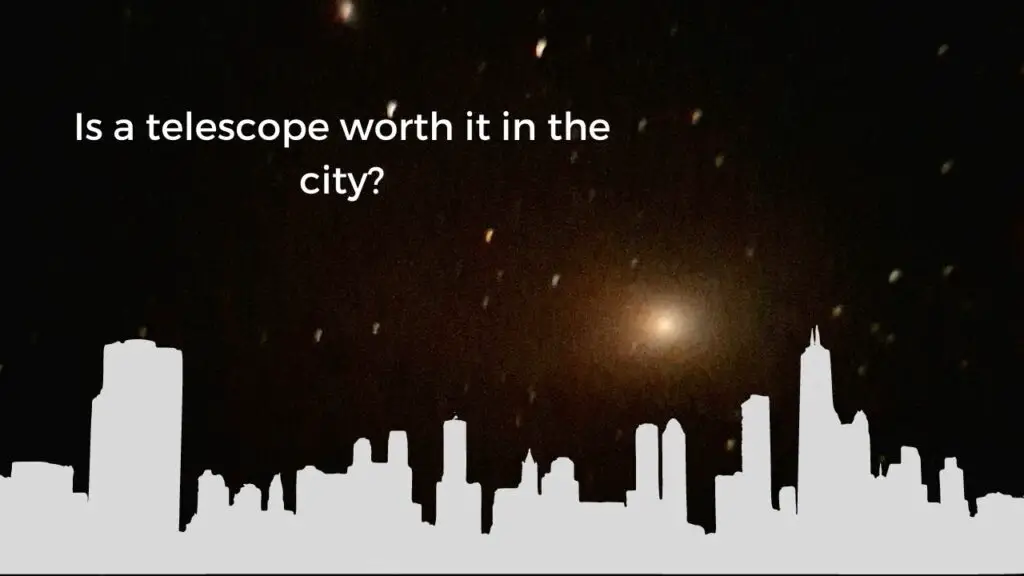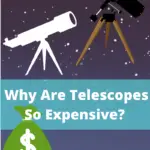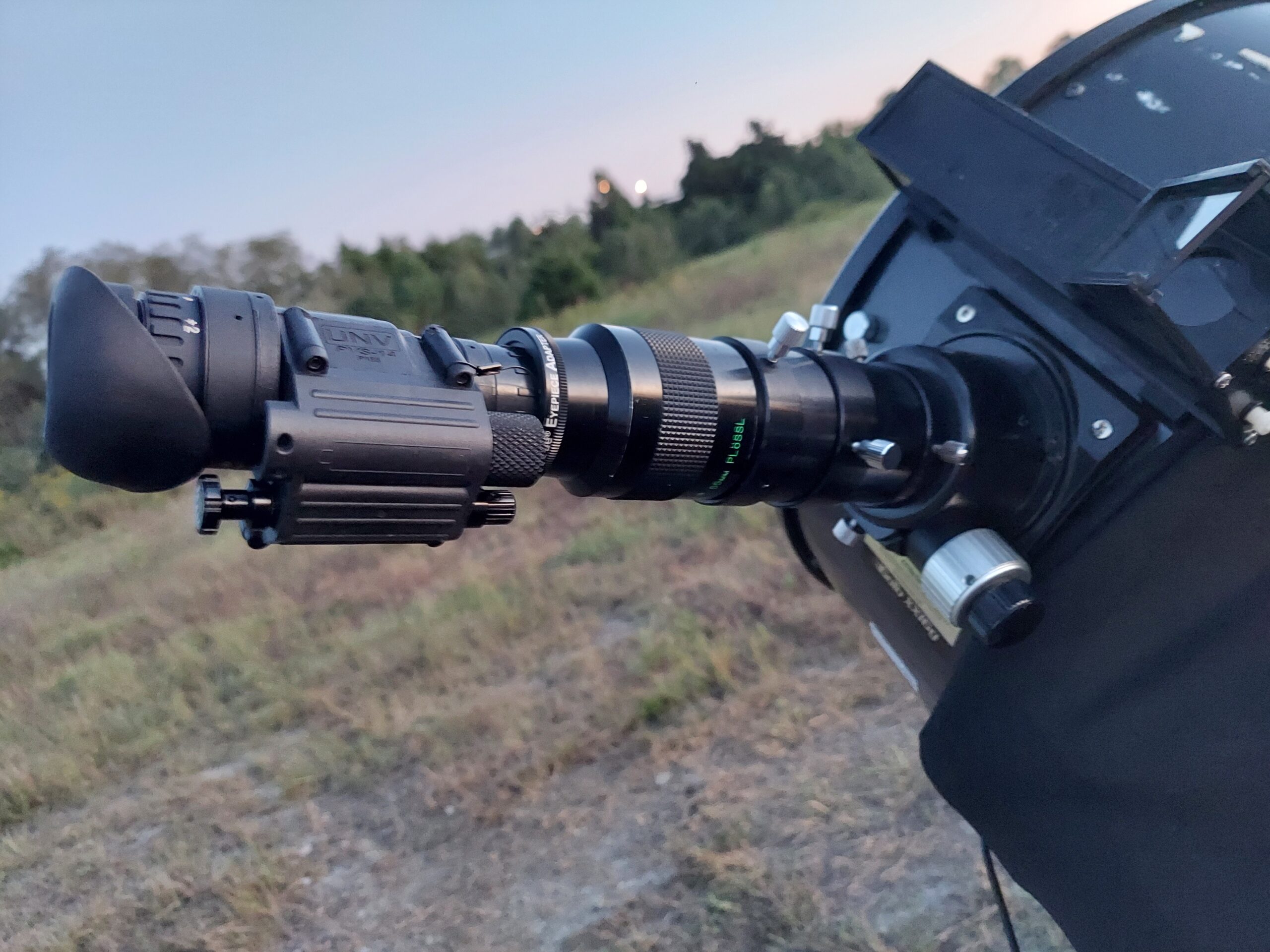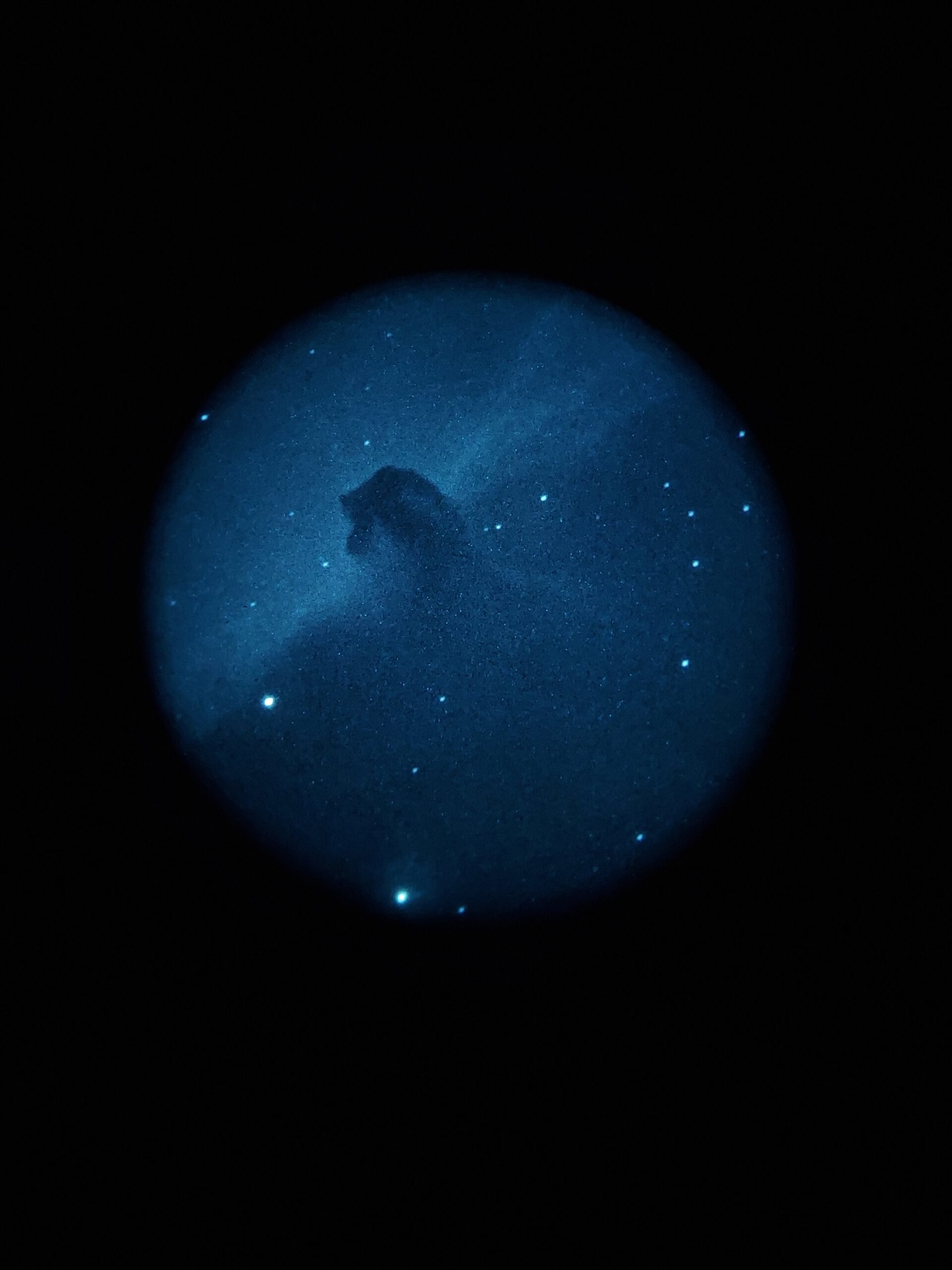Stargazing is an activity which works best away from city lights. But what if you live in the suburbs, or a dense city center? Is it pointless to invest in a telescope?
It is still worth considering a telescope if you live in the city. With the right equipment and expectations there are some good objects to view from the most light polluted skies.
Some people will tell you that a telescope is a waste unless you have a way to transport it to darker skies. While there is value in traveling to dark skies, there are many objects which can be viewed from under light-polluted urban skies.
The trick is to select the right equipment and set your expectations accordingly.

Urban vs. Rural Skies
When it comes to stargazing, whether with a telescope, binoculars, or even the naked eye, it is no contest: a dark rural sky will always win.
This mainly has to do with light domes which surround major city centers. Even miles away from urban cores, you can see these domes of greyish light pollution extending up into the night sky. A quick scan of the horizon should be enough to show you in which direction the city lies.
From the inner city itself, you will be inside one of these light domes and the entire sky will appear grey, with only the very brightest stars visible.
If you travel to a rural site, at least 50 miles from the city but ideally 100 miles or more, the difference is astonishing.
The number of visible stars multiplies from dozens to a thousand or more. The Milky Way becomes visible, increasing in brilliance the further away from the city you get. Turning a telescope or binoculars toward such dark skies, particularly in absence of a bright moon, is one of the great delights of this hobby.
But if you live under an urban light dome, don’t despair. There are still plenty of objects to view with a telescope.
The Moon
Our moon is itself a source of natural light pollution, washing out fainter stars and deep-sky objects even under dark rural skies. For this reason, amateur astronomers often avoid observing when the moon is bright.
The good news is that views of the moon are affected very little, if at all, by artificial light pollution. And it is a grand object in its own right: magnificent at any magnification, with virtually any equipment, it offers a different view night by night and even hour by hour as it moves through its phases and the angle of sunlight striking the lunar surface changes.
You can observe countless craters, smooth volcanic plains, long mountain ranges, debris rays from impacts billions of years ago.



Planets
Jupiter, Saturn, Venus, and Mars are wonderful objects to view from the city.
They are all easy to locate, assuming they are in-season, and are undiminished by light pollution. A small telescope reveals two dark cloud bands, the Great Red Spot, and up to four orbiting moons on Jupiter.

Saturn displays its majestic ring system, and on nights of steady seeing you might glimpse the Cassini Division, visible in the below photograph.

While you won’t see surface detail on Venus, you might catch it in its moon-like crescent phase.
Mars is perhaps the trickiest of this bunch, its orbit bringing it close enough to view only every two years. During a close approach, you can see some faint surface details on the rocky planet, and maybe a polar ice cap.

Binary Stars
These often-overlooked objects are some of the prettiest sights in the sky, and the brighter ones are easy to find and observe from the city.
Albireo is Cygnus
Mizar in Ursa Major
Almach in Andromeda
are just a few of the showpiece binaries to check out. Note their color and brightness contrast.
See if you can split both components of Epsilon Lyrae.
Deep-Sky Objects
There’s no question: views of DSOs are greatly diminished by light pollution.
Nevertheless, you may still be able to view some Messier objects from the city. Try some of the brighter clusters, such as M11 and M13. If you have a nebula filter like the Orion Ultrablock, you can try it out on bright planetary nebulae like M27 and M57.
Don’t expect to see colour or great detail, especially if you have a small telescope; rather, try to appreciate the views for what they are.
Which Telescope Should You Buy?
This is a large enough topic for its own article, but for now we can make some generalizations about what sort of telescope might be suitable for viewing from your location.
For starters, we can probably rule out the 10- and 12-inch sky cannons which are most suited to deep-sky viewing from a dark site. These telescopes collect so much light it will just make the problem worse by collecting the light you don’t want.
A 6- or 8-inch Dobsonian reflector is still a good all-around choice for planetary and deep-sky viewing but might be too cumbersome for use in a small yard or balcony.
A smaller telescope with a long focal length would work well for planets and double stars; collapsible tripods also make for easier transport and storage.
Go-To and tracking capabilities would add to its usefulness and help avoid the problem of navigating a light-polluted sky.
The Celestron 5Se would fit the bill, or something like the Meade StarNavigator 102mm.
Many people opt for small tabletop reflectors like the Mini Lightbridge or Sky-Watcher Heritage series. These will provide nice, wide fields of view but with their short focal lengths, they are not as well-suited to viewing the planets and double stars mentioned in this article.
I recommend the Ceslestron 5Se for city dwellers. This is your best, portable option. The scope has a big following and you will be able to learn everything you need to get started on YouTube. This is a very beginner friendly telescope.
Other Considerations
Now that you know astronomy is possible from the city, and what sort of telescope you might buy, it’s time to consider where you will be setting it up.
You need a clear view of at least part of the sky, obviously. It’s also important to make sure you won’t have any bright lights shining directly onto your setup. If your view is blocked or brightly lit, a nearby park or field might be a good option, but first ask yourself if you are comfortable and confident about moving your gear back and forth in the dark. Activities which seem simple in daylight can appear quite different at night. Many people want to look through telescopes; far fewer are willing to go out of their way to do it.
As I said at the beginning, a dark sky will always win.
If you make the occasional trip away from the city, get a telescope which can make the trip with you. Try to plan trips close to the new moon to take full advantage of the improved conditions.
For city-dwellers, being under dark skies is a magical experience and not something to take for granted.






